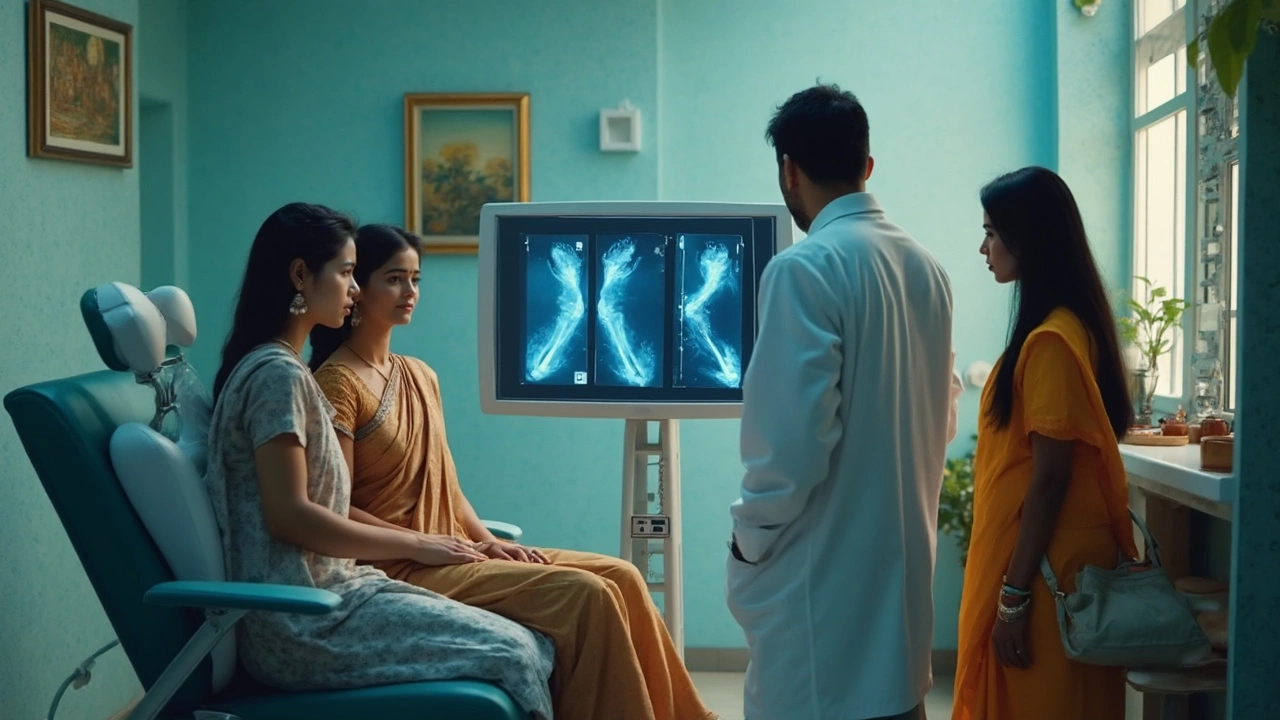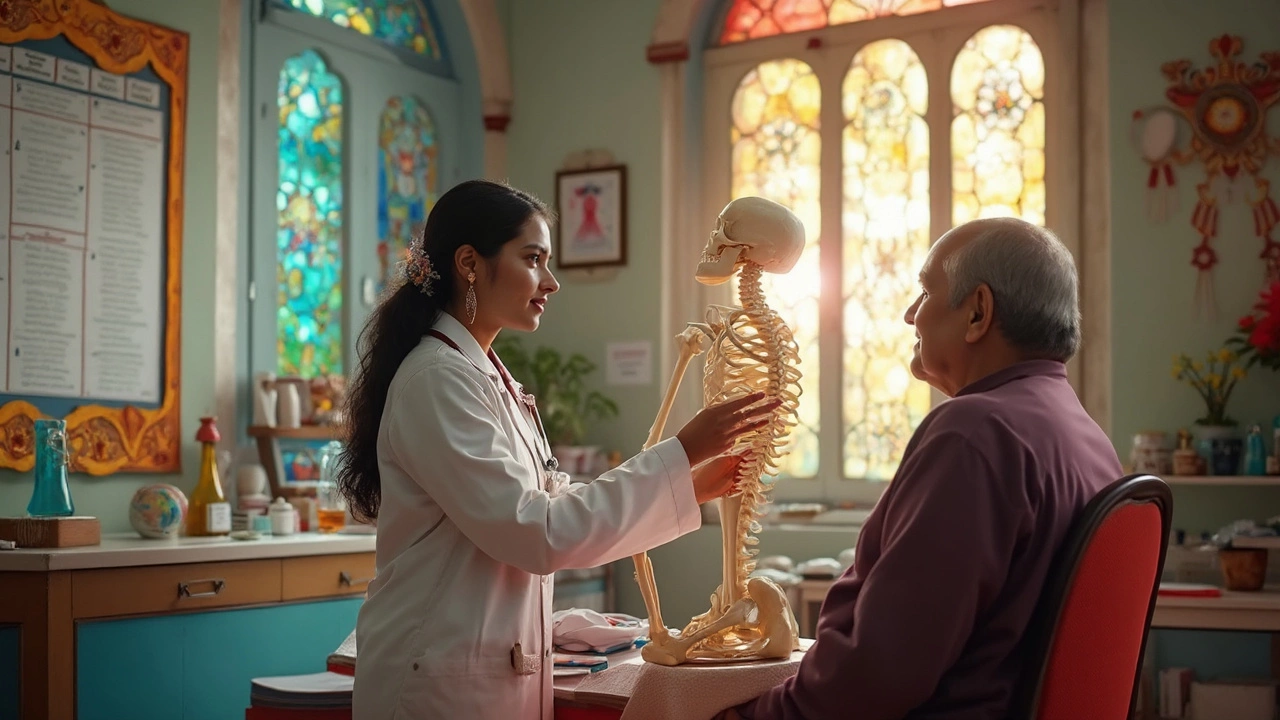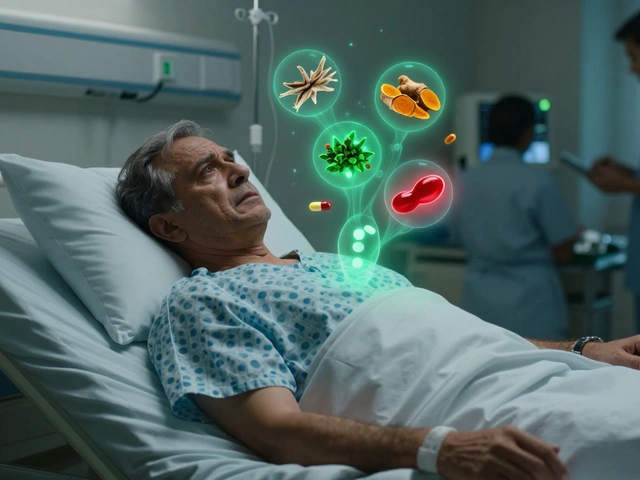Feeling a bit anxious about your first visit to the orthopedic doc? Trust me, you're not alone. It's like having that weird feeling when your car starts making noises, and you think, 'Time for a mechanic!' Except, this time, it's your body signaling for some expert care.
So, what's the headline? Expect a thorough examination of joints, bones, and muscles. Orthopedic specialists are like detectives for your body—they dig deep to diagnose issues that could be causing pain or discomfort.
Once you're in the consultation room, the specialist will probably ask you a bunch of questions about your medical history and any pain you're experiencing. They might even ask about your lifestyle—don't worry, it's not a grilling session, just info they need to tailor your treatment.
Ever wondered how they figure out what's wrong? That's where their tool belt comes into play. They might order an X-ray, MRI, or a CT scan. Pretty cool, huh? These things will help the doc get a clearer picture (literally!) of what's going on inside.
- What to Expect
- Types of Conditions Treated
- Initial Consultation Process
- Diagnostic Tools and Techniques
- Follow-Up and Care Advice
What to Expect
Stepping into an orthopedic specialist's office might give you butterflies, especially if it’s your first time. But let’s put your mind at ease. Knowing what happens during your visit helps, right? So here goes.
Orthopedic visits usually start with the friendly receptionist handing you forms to fill out. These forms cover your medical history and any medications you're taking. It might seem a bit repetitive, but it’s essential for your doc to get the full picture. Once you’re past that, it's time to see the specialist.
You'll sit down with the orthopedic doc, and it’ll feel more like a chat than an interrogation. They’ll ask about your symptoms, any injuries you might have had, and how your day-to-day activities are going. Think of it as helping them connect the dots.
"The more information you share, the better we can help," says Dr. Michelle Lee, an esteemed orthopedic surgeon.
Physical Examination
After the chit-chat, it’s time for a physical examination. The doctor will check your joints, muscles, and range of motion. This step provides vital clues about what might be happening inside.
Diagnostic Tests
If needed, the doc might recommend a few tests. Here’s where the fancy tech comes in, like X-rays or MRIs. These tests let them see everything under the skin, showing any fractures or abnormalities.
| Type of Diagnostic Test | Usage |
|---|---|
| X-ray | Identifies bone fractures and certain disorders |
| MRI | Examines soft tissues, like muscles and ligaments |
| CT Scan | Offers detailed images of bone structures |
These tests might sound a bit intense, but they’re all about making sure the diagnosis is spot on.
Finally, depending on the outcome, the orthopedic specialist will discuss treatment options with you. This can range from physical therapy to medication, or even surgery if needed. But don't worry, it’s all about working together on the best path to recovery.
Types of Conditions Treated
In the world of orthopedics, there's a wide range of conditions that these specialists handle. It's not just about broken bones or sprained ankles. Orthopedic specialists are like the pit crew for your body's structural integrity—fixing, maintaining, and optimizing your bone and joint health.
Common Joint Issues
First up, let's talk joints. Orthopedic specialists frequently treat joint problems like arthritis (you know, that annoying creakiness) and bursitis, which tends to flare up with repetitive movements. They also help folks struggling with joint pain due to injuries or chronic conditions, offering strategies to manage pain and improve mobility.
Bone Health
Orthopedics also handles bone-related issues. Whether it’s fractures, osteoporosis, or childhood bone growth problems, they’ve got the tools to diagnose and treat all sorts of bone conditions. Fun fact: they can even help predict if you're at risk for osteoporosis with a bone density test.
Spinal Trouble
Spinal conditions are a big part of the practice too. If you're dealing with back pain, scoliosis, or slipped discs, orthopedic specialists have your back. Literally. They often work closely with physical therapists to develop comprehensive care plans to keep your spine as healthy as possible.
Sports Injuries
Calling all athletes and gym buffs! Sports injuries like torn ligaments (hello, ACL tears) and tendonitis fall under their expertise. They provide everything from diagnosis to rehab, ensuring athletes get back in the game safely.
Here’s a quick look at some of these conditions and their frequency with a stats table:
| Condition | Estimated Cases per Year (USA) |
|---|---|
| Osteoarthritis | 30 million |
| Bursitis | 5 million |
| Osteoporosis | 10 million adults |
| ACL Tears | Approximately 200,000 |
So, if any part of the body is acting up, you know who to call. Orthopedic specialists cover a lot of ground, ensuring you don't just fix injuries, but also come up with long-term solutions for better bone and joint health.

Initial Consultation Process
Alright, let's walk through what you'll experience during that all-important first consultation at the orthopedic hospital. The initial consultation is like stepping into a detective story, where you and your doctor are partners in uncovering the mystery of your discomfort.
First Things First: The Q&A Session
When you sit down with the orthopedic specialist, be ready for a solid round of questions. They're digging deep into your medical history and current symptoms. If you're experiencing joint pain or issues with your bones, the more detailed you can get, the better. No need to sugarcoat; honesty leads to better diagnostics.
Don't be surprised if they ask about your daily activities or any old injuries. This helps them build a complete picture of your overall health. Dr. Jane Smith, a well-respected orthopedic expert, once said,
"Understanding a patient's lifestyle is crucial in tailoring an effective treatment plan."
Getting Physical: The Examination
Next, they'll likely perform a physical examination. This is a hands-on approach where they check for swelling, redness, and range of motion issues. Don't worry, it's all pretty standard and helps in pinpointing the exact nature of your problem.
The High-Tech Stuff: Diagnostic Tests
To get a better idea of what's happening inside, the specialist might recommend some diagnostic tests. This could be anything from X-rays, which are great for spotting bone fractures, to MRIs that show detailed images of soft tissues. Here's a handy list:
- X-ray - Quick and excellent for examining bones.
- MRI - Great for detailed images of soft tissues.
- CT Scan - Combines X-ray images taken from different angles and uses computer processing to create cross-sectional images.
Some orthopedics are now using advanced tech like 3D imaging for a more accurate diagnosis; pretty futuristic, right?
Wrapping it Up: The Plan
By the end of your visit, you'll discuss potential treatment plans. They might suggest therapies, medications, or in some cases, surgery. Whatever the recommendation, feel free to ask questions. Treatment is a partnership, and your input is valuable. Remember, this consultation sets the stage for everything that follows—so be engaged, informed, and proactive.
Diagnostic Tools and Techniques
Alright, so you're probably wondering how orthopedic specialists figure out what's causing your issues. They use a treasure chest of diagnostic tools to get to the root of the problem. Knowing these tools can lift the fog around those medical talk moments!
Imaging Techniques
Let's start with the classics. You've got your X-rays. They're like the old-school detectives of the hospital world, really handy for spotting fractures or dislocations. If you've ever had an X-ray, you know the drill: stand still, deep breath, snap!
But what if the problem runs deeper? That's when MRIs and CT scans come into play. MRIs are genius at revealing soft tissues like muscles and tendons, while CT scans combine X-ray technology with computers to create 3D images of your insides.
Physical Examinations and Tests
Beyond imaging, your orthopedic visit might include a set of physical and movement tests. Specialists check your joint’s range of motion, flexibility, and strength. It’s like a workout session, but with a serious purpose.
Electromyography (EMG) Tests
Now, let's talk nerves; sometimes literally! EMGs are tests that analyze the electrical activity of muscles. They're super helpful if there's a suspicion that your nerves might be the culprits.
| Tool | Purpose |
|---|---|
| X-ray | Detects fractures or bone abnormalities. |
| MRI | Examines soft tissues like muscles and ligaments. |
| CT Scan | Provides detailed images of bones, vessels, and soft tissues. |
| EMG | Evaluates nerve activity and muscle signals. |
Choosing the right diagnostic tool is like crafting a personalized plan for your health. The goal? Strong bones and a life free from unexplained aches and pains. So next time you're at the orthopedic hospital, you'll be the savvy patient, knowing exactly what's going down!

Follow-Up and Care Advice
Once you've had your orthopedic visit, you might think the hard part's over. Well, sort of! Now's the time for the follow-up care, which is just as crucial as the initial diagnosis. You'd want to pay attention to this part to ensure your bones and joints can kick it back into action.
Understand Your Treatment Plan
After the visit, your orthopedic specialist will set you up with a treatment plan. This might include physical therapy, medication, or sometimes even surgery if that's the best route. Keep in mind that sticking to this plan is key to recovery.
According to Dr. Emily Roberts, a leading orthopedic surgeon,
"Adhering to a prescribed treatment regimen is essential for optimal recovery. Patients who actively engage in their care typically experience more positive outcomes."It makes sense, right? Consistency is everything.
Regular Check-Ins
Don't ignore those follow-up appointments. Even if you're feeling better, they help monitor your progress and tweak your treatment if needed. The goal is to ensure everything's healing as it should. Miss a couple of check-ups, and you might miss out on valuable advice that'll get you back on your feet sooner.
Home Exercises and Lifestyle Adjustments
Your treatment might include exercises to do at home. They're usually a crucial part of the healing process, helping to strengthen the affected area and improve mobility. Don't skip them unless you want to stay in pain longer!
Beyond exercises, think about lifestyle changes. Eating right and staying active can have big impacts. You know, those greens your mom always told you to eat? Yeah, eating a balanced diet helps with bone health!
Tracking Your Progress
It might also be helpful to keep track of your recovery journey. Documenting pain levels or mobility changes lets you notice improvements or identify if things aren't getting better. You can even bring these notes to your appointments for a more efficient visit.
In a study done in 2023, patients who actively tracked their recovery were 20% more likely to achieve their treatment goals than those who didn't.
| Action | Purpose |
|---|---|
| Attend Follow-Ups | Monitor recovery |
| Exercise at Home | Strengthen bones and muscles |
| Track Progress | Identify improvements |






